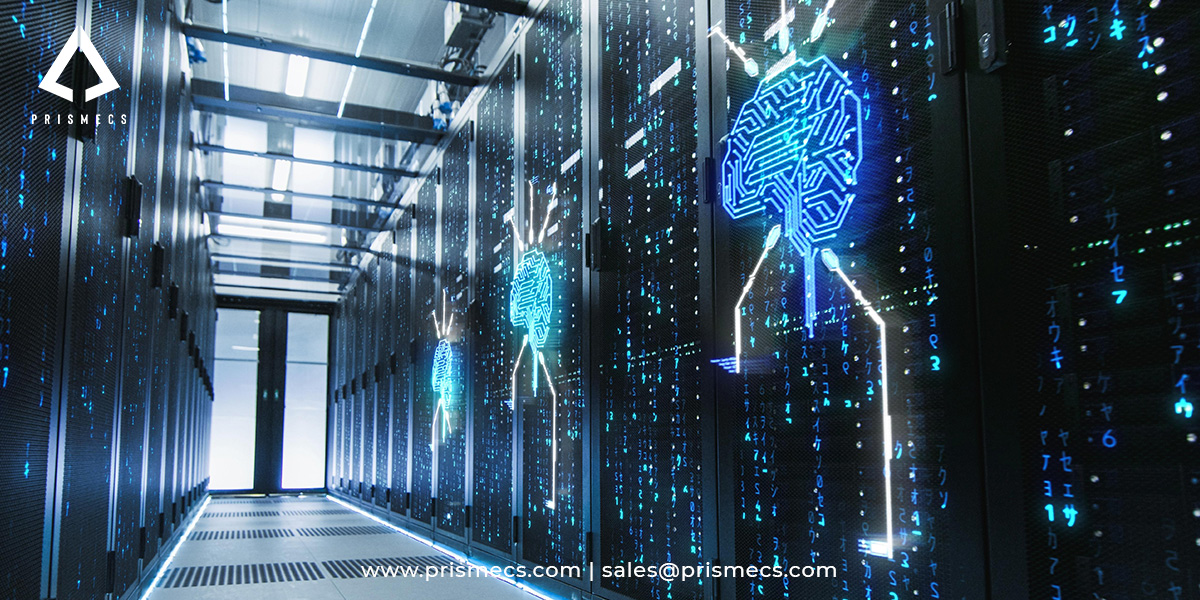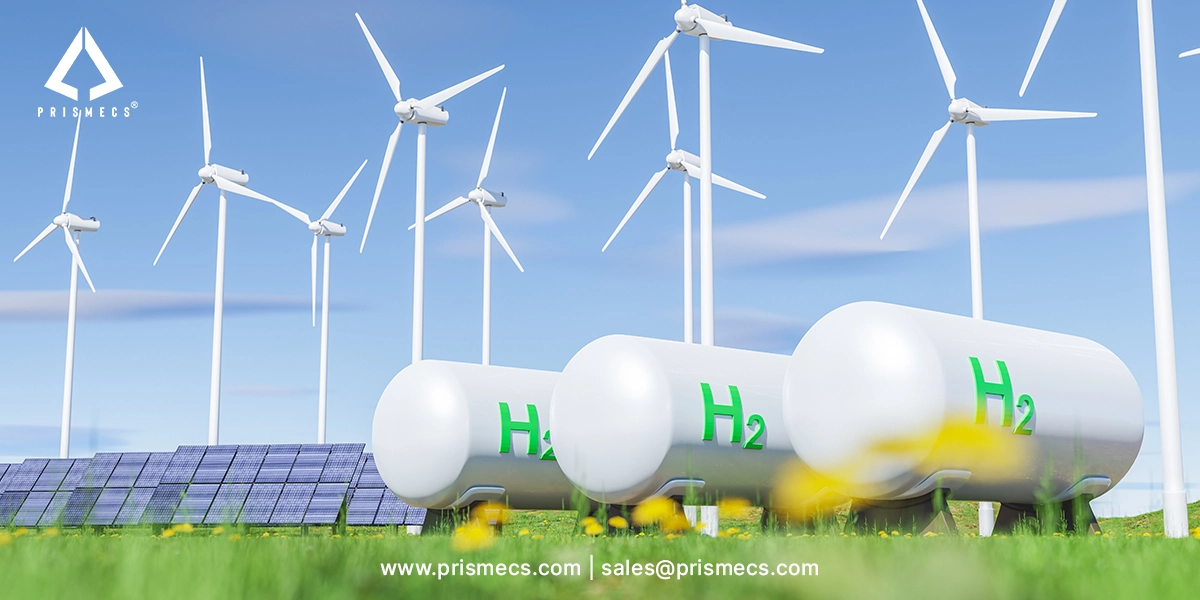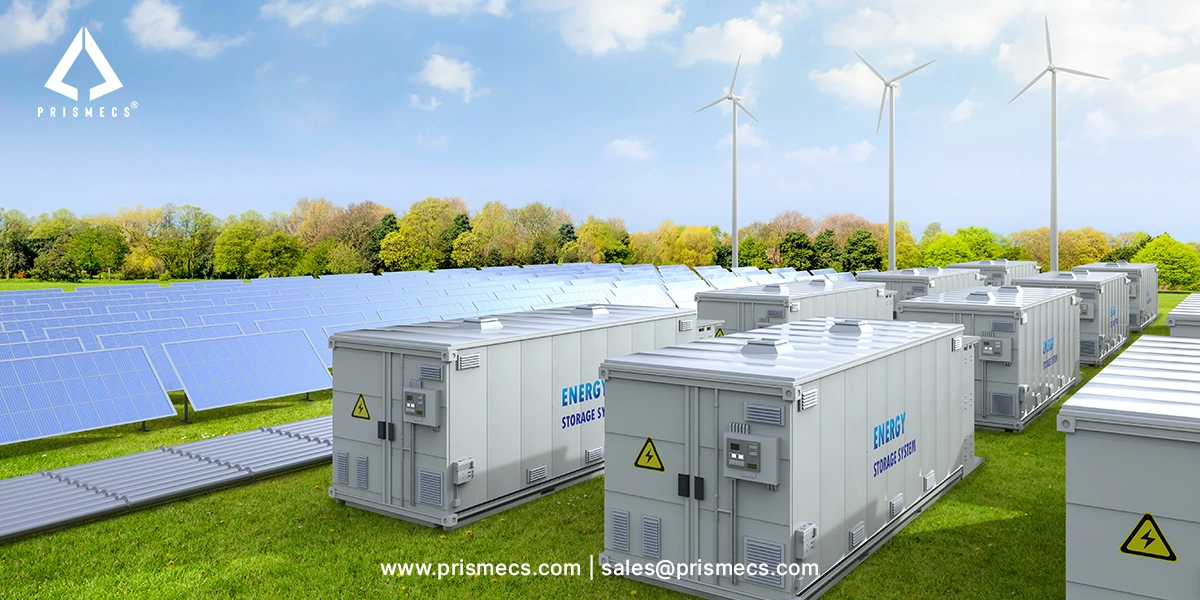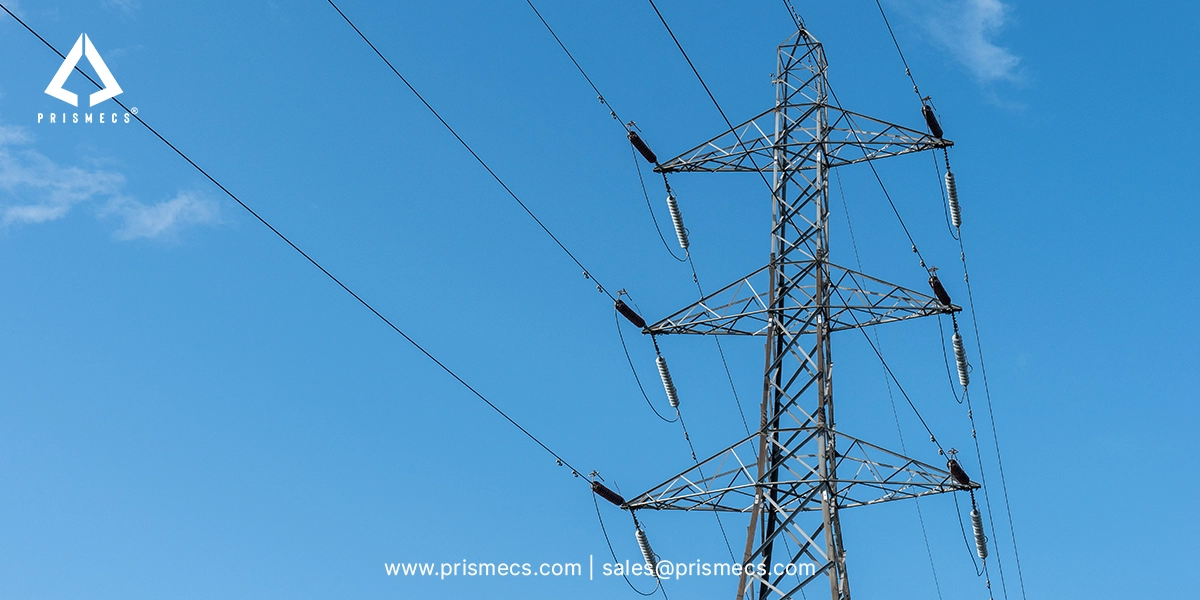
As artificial intelligence (AI) continues to revolutionize every primary industry, we believe one of its most significant impacts is in AI-powered generation. The massive growth in modern data centers increases electricity demand and strains current electricity grids. Technologies such as generative AI and large language models drive this rapid growth and increased power usage.
This shift pushes innovation in electricity generation and modern power infrastructure management. In this blog, we examine how AI is transforming global power needs and challenging traditional energy models. We also highlight innovative strategies that reshape electricity generation for the future.
AI and the Rising Power Needs of Data Centers
The rise of AI is driving an exponential increase in data generation and processing. Training complex AI models requires vast amounts of data and computational power. This translates to a dramatic increase in workload across enterprise data centers and cloud services.
Data center infrastructure and other digital operations must handle significantly more demand. AI applications consume a significant amount of energy due to their intensive nature. Training large AI models requires substantial computing power and is an energy-intensive process. These models support autonomous driving, predictive analytics, and natural language processing.
Modern data center security systems must scale with performance to protect AI workloads. They must secure every level of AI operations within the data center.
Modern Data Centers Must Support:
- Massive storage and processing for large language models.
- Continuous inferencing workloads for generative AI.
- High-performance GPUs and TPUs consume more power than traditional CPUs.
- Robust power systems to meet demand efficiently.
- We need a mix of cost-effective energy sources, including nuclear energy, to ensure sustainability.
Types of data centers, including hyperscale, edge, and enterprise, must now evolve their capabilities to meet the demands of the modern digital landscape. They must handle the unique and intensive requirements that come with AI technologies.
Data centers account for 1% to 1.5% of global electricity use, and operators acknowledge their environmental impact. As we move forward, balancing energy consumption with AI innovation will require more innovative design, sustainable power sources, and resilient energy strategies.
The Energy Demands of AI Workloads
AI workloads are fundamentally different from traditional computing tasks. These workloads require modern data processing in high-density computing environments, which increase both electricity generation requirements and cooling demands to dissipate excess heat.
High Electricity Use During AI Model Training
Training deep learning models, for example, involves complex mathematical calculations and requires massive parallel processing. This process demands substantially more electricity energy than typical operations.
Growing Power Needs Demand Smarter Energy Strategies
As AI models become more sophisticated and data sets grow, experts anticipate that power consumption will continue to increase. This necessitates reevaluating how we generate and manage energy production for these critical facilities, especially in the context of resilient data center design.
Related: Why Your Business Should Invest in Green Data Centers Now
Traditional Power Generation Methods and Their Limitations
Data centers typically utilize grid power, backup generators, and uninterruptible power supplies (UPS) to meet their amount of electricity requirements. Grid power, often generated from fossil fuels like natural gas and coal, has been the primary source. However, this reliance on fossil fuels raises environmental concerns. The carbon footprint is growing, contributing to climate change.
Grid Power Challenges
Furthermore, grid power can be unreliable and subject to outages and fluctuations that can disrupt operations. These challenges become more serious during natural disasters, which can impact infrastructure. Backup generators, typically diesel-powered, provide a safety net during grid failures. But they are also a source of pollution and are not a sustainable long-term solution.
UPS Limitations
Uninterruptible power supplies (UPS) offer short-term backup power to protect against sudden power loss. They enable a smooth transition to backup generators or the restoration of grid power. UPS systems protect data and equipment from damage caused by unexpected outages.
The Rise of Renewable Energy
The increasing awareness of environmental issues and the falling cost of renewable energy technologies are driving a shift towards more sustainable power generation.
Solar and Wind Adoption
Solar photovoltaics (PV), wind power, and other renewable energy sources are becoming increasingly important components of the power mix. Many operators invest in solar and wind farms to generate clean electricity. Cloud data centers in the United States and other regions also make these investments.
Renewable Energy Benefits
According to the Energy Information Administration, these renewable energy sources not only reduce the carbon footprint but also provide energy independence. This shields operators from fluctuations in fossil fuel prices while promoting modern data center sustainability and efficiency.
Innovative Power Generation Solutions
Meeting the power demands of AI workloads requires a multifaceted approach. In addition to simply adopting renewable energy sources, data operators are exploring various innovative power generation and management solutions.
Renewable Energy Integration
AI data centers are increasingly powered by solar photovoltaics, wind energy, and hydroelectric power. These clean energy sources help reduce carbon footprints. They also stabilize long-term costs. They reduce dependency on volatile fuel markets.
Microgrids
Microgrids are localized energy grids that can operate independently or in conjunction with the primary power grid. They offer greater resilience and can integrate various renewable energy sources, providing a more reliable and sustainable power supply for data center facilities.
On-site Generation
Generating electricity on-site boosts energy efficiency and reduces transmission losses. It utilizes technologies such as fuel cells or combined heat and power (CHP) systems. CHP systems use natural gas to produce electricity. They also capture waste heat for power and cooling, improving overall efficiency.
Energy Storage Systems
Storage systems, such as batteries, help smooth out the intermittent nature of renewable energy. They store extra energy during peak times and release it when needed, ensuring a steady power supply for infrastructure.
Advanced Cooling Systems
Powering and cooling represent a significant portion of its energy consumption. Innovative cooling systems, like liquid or free air, can significantly reduce the energy required for cooling. Freeing up more power for AI workloads.
AI-Powered Energy Management
Ironically, AI itself can play a crucial role in optimizing energy consumption. AI algorithms analyze real-time data on power usage, cooling needs, and workload demands. They maximize resource allocation and enhance overall efficiency by utilizing this data. That dynamically adjusts power allocation and optimizes energy efficiency across the facility.
Global Data Centers Power Management Market
The market has experienced significant growth over the past few years. Analysts expect it to rise to $23.47 billion in 2025, reflecting a compound annual growth rate (CAGR) of 6.0%. Increasing capacity demands drive this growth. The widespread adoption of cloud computing, a growing focus on energy efficiency, the expansion of the digital economy, and government regulations supporting energy conservation.
The Future of Data Center Power Generation
The future will likely rely more on renewable energy sources. The new design will feature a more distributed and resilient power infrastructure. Also, it will integrate innovative technologies to optimize energy usage. As AI continues to evolve and its applications become more widespread, the demand for its power will only intensify.
The operators must embrace innovation and invest in sustainable power generation solutions to meet these growing demands while minimizing environmental impact. Nuclear power plants remain a controversial energy source for many people and governments today. They may help provide baseload power to support the world’s ever-increasing energy needs.
A Rapid Increase in Power Demand
According to projections from the Boston Consulting Group (BCG), artificial intelligence (AI) is driving growth. The expansion of data centers also contributes to a significant increase in U.S. power markets. These markets have remained relatively stable for the past two decades.
Analysts expect demand to grow by 15-20% annually, reaching 100-130 GW (800-1,050 TWh) by 2030. This surge in demand will match the electricity use of 100 million U.S. households. That is about two-thirds of all homes in the country.
Security and Power Reliability
A reliable power supply is crucial for ensuring security and maintaining business continuity. Power outages or fluctuations can lead to data loss, system downtime, and security vulnerabilities. Therefore, operators must prioritize power reliability and implement robust backup systems to protect their facilities from power-related threats.
Invest in redundant power sources to ensure reliability. Use uninterruptible power supplies to prevent disruptions. Install robust monitoring systems to detect power issues early. Respond quickly to maintain stable operations.
At the Bottom Line
The growth of AI is revolutionizing the power generation needs of data centers. As AI workloads become more demanding, they require a more sustainable, reliable, and efficient power infrastructure. The shift to renewable energy is crucial for handling the AI boom.
Innovative power solutions help manage energy efficiency. Smart technologies improve power generation and distribution. These advancements support AI growth while reducing environmental impact. It also maintains the highest levels of security and reliability.
Partner with Prismecs for Reshaping the Power Generation Needs of Data Centers
Prismecs is at the forefront of reshaping energy efficiency, leveraging cutting-edge technologies and innovative solutions, by integrating advanced cooling systems, intelligent monitoring tools, and sustainable practices. We help data centers significantly reduce power consumption.
Our commitment to efficiency and environmental responsibility reduces operational costs and supports global efforts to mitigate climate change. As data demands continue to rise, our expertise ensures they remain high-performing and environmentally responsible. To avail of our services, call us at +1 (888) 774-7632 or email us at sales@prismecs.com.
Tags: Data Centers AI Power Generation Cloud Services Generating Electrical Energy Sources Data Center Facility Produce Electricity Powering And Cooling Modern Data Center Types Of Data Centers Uninterruptible Power Supplies Data Center Infrastructure Natural Gas Fossil Fuels Solar Photovoltaics Storage Systems Data Center Security Enterprise Data Centers Cloud Data Centers Cooling Systems Nuclear Power Plants
recent posts

Green Hydrogen
6 minutes read
Green Hydrogen Plant Technology Guide
Discover how a green hydrogen plant works, its key technologies, and its role in clean energy. Explore solutions for scalable, carbon-free hydrogen pr...

EPC Services
7 minutes read
EPC Power: From Design to Delivery of Reliable Energy System
Discover how EPC power solutions streamline design to delivery, ensuring reliable, efficient, and future-ready energy systems in one integrated proces...

Data Centers
12 minutes read
Powered Shell Data Centers | Benefits, Design & Adoption
Discover the benefits, design, and adoption of powered shell data centers. Learn how they boost speed to market, scalability, and energy efficiency.

Distributed Energy Services
9 minutes read
Smart Grid and Distributed Energy Resources
Discover how smart grids and distributed energy resources (DER) work together to create efficient, resilient, and sustainable energy systems for the f...